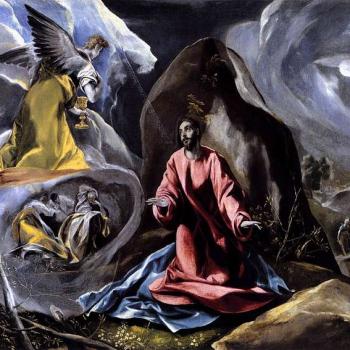Greg Seltz of the Lutheran Center for Religious Liberty reprinted an article I wrote for the Lutheran Witness back in 2020. The topic is worth reflecting on today.
It has to do with Luther’s doctrine of the estates, an important facet–in addition to the Two Kingdoms and the doctrine of vocation–of his teaching about Christianity and society. God designed three sets of human relationships that are necessary for human flourishing: the family, the church, and the state. We have multiple vocations in all of them. In addition, though, Luther wrote about another sphere, which he called The Common Order of Christian Love, which is the title of my essay:
According to Luther’s teachings about the Christian life, the good works God desires of us are carried out in our vocations. That is to say, the Christian life does not necessarily involve heroic accomplishments and dramatic deeds. Rather, God calls us to love and serve our neighbors in our ordinary interactions with the members of our families, our coworkers and our fellow citizens.
We also have other neighbors whom God has called us to serve. In addition to family members and coworkers, we have friends, acquaintances and a host of informal interactions. And we are often obliged to do good works for people we do not even know.
In the parable of the Good Samaritan, the priest and the Levite had vocations to serve in the temple, but they neglected the man bleeding by the side of the road. The Samaritan had no particular vocation that required him to show compassion to this particular victim, but he did anyway (Luke 10:25–37).
However, there is an important facet of the doctrine of vocation that is sometimes overlooked.
Please read the essay. It’s not long, but I want to link to the LCRL site, since that’s where it’s currently published. Then I want to say a few words about it. . . .
The key text, both for Luther’s doctrine of the estates and what could be described as a fourth estate, the common order, is his Great Confession Concerning Christ’s Supper, published in 1528 (Luther’s Works: American Edition, vol. 37, pp. 161–372).
Though the work’s focus is Luther’s understanding of Holy Communion, it gets into a wide range of other issues as Luther sets forth his confession of faith two years before the presentation of the Augsburg Confession. The estimable Pastor Bryan Wolfmueller calls it Luther’s last will and testament. Though he would not die until 1546, eighteen years later, he expected martyrdom at any time and wanted to make his positions clear against those who were already distorting his teachings.
In the course of doing so, Luther challenges the “holy orders” of the church of Rome, contrasting them with “The True Holy Orders, The Three Estates.” Pastor Wolfmueller has helpfully posted an English translation of the third part of the Confession. Here is what Luther had to say about the three estates and the common order:
But the holy orders and true religious institutions established by God are these three: the office of priest, the estate of marriage, the civil government.All who are engaged in the clerical office or ministry of the Word are in a holy, proper, good, and God-pleasing order and-estate, such as those who preach, administer sacraments, supervise the common chest, sextons and messengers or servants who serve such persons. These are engaged in works which are altogether holy in God’s sight.
Again, all fathers and mothers who regulate their household wisely and bring up their children to the service of God are engaged in pure holiness, in a holy work and a holy order. Similarly, when children and servants show obedience to their elders and masters, here too is pure holiness, and whoever is thus engaged is a living saint on earth.
Moreover, princes and lords, judges, civil officers, state officials, notaries, male and female servants and all who serve such persons, and further, all their obedient subjects—all are engaged in pure holiness and leading a holy life before God. For these three religious institutions or orders are found in God’s Word and commandment; and whatever is contained in God’s Word must be holy, for God’s Word is holy and sanctifies everything connected with it and involved in it.
Above these three institutions and orders is the common order of Christian love, in which one serves not only the three orders, but also serves every needy person in general with all kinds of benevolent deeds, such as feeding the hungry, giving drink to the thirsty, forgiving enemies, praying for all men on earth, suffering all kinds of evil on earth, etc. Behold, all of these are called good and holy works. However, none of these orders is a means of salvation. There remains only one way above them all, viz. faith in Jesus Christ.
Medieval society also had three estates, which defined the class distinctions of the time: the church (“those who pray”), the nobility (“those who fight,” though better thought of as “those who rule), and the commons (“those who work”).
These were strictly separated spheres of life, though they were in relationship to each other. The “commons,” consisting of both peasants and the middle class provided the labor. The nobility, with its own hierarchies of titles, began as the warrior caste, but morphed into the aristocracy that owned the land and ruled the nations. And the church saw to the souls of the nobles and the commoners, while constituting an elite “spiritual” class that was spiritually superior to the necessary but sin-ridden estates of the world.
Luther’s genius was not only to recast the notion of the estates in such a way that every Christian was a member of each estate. Once the Reformation took root and transformed society–with its teachings of the priesthood of all believers, the doctrine of vocation, and universal education–every Christian prayed; every Christian worked; and (eventually) every Christian ruled.
(See my detailed discussion of these estates and how Luther upended them in my book Working for Our Neighbor: A Lutheran Primer on Vocation, Economics, and Ordinary Life.)
UPDATE: An important contribution to how the doctrine of the estates needs to be applied to our cultural problems today has just been released. It was written by Rev. Paul Williams of the Lutheran Church of Canada and is being published by Ad Crucem Press. I wrote the foreword. I will have much more to say about this in the near future.
Illustration: The Good Samaritan. German original: Der barmherzige Samariter. Creator: Erasmus von Engert (1796 Wien – 1871 Wien). Date: 1835.Via Look and Learn, CC BY-SA 4.0

















